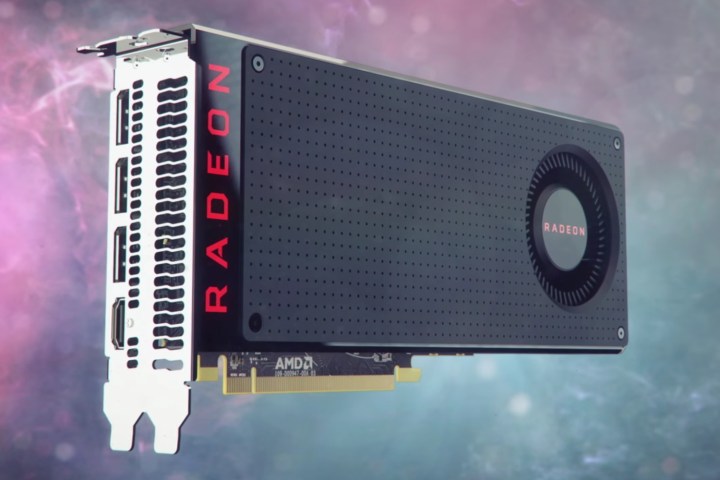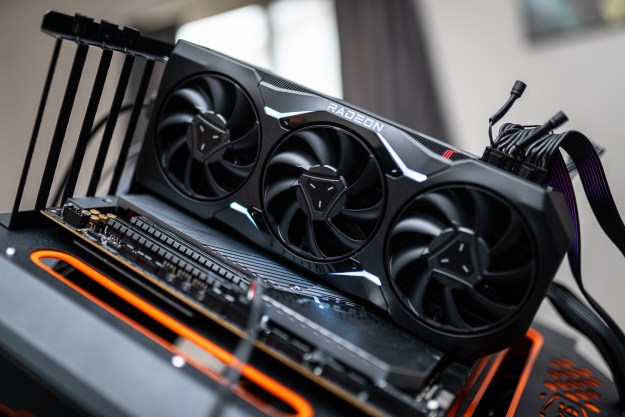
The big deal with the updated Polaris design is that it will be based on a different chip manufacturing process called low power plus (LPP). The Polaris-based Radeon RX 400 Series cards on the market are based on 14nm low power early FinFET-based processing technology, which was an early version providing “area and power benefits.” The LPP version, also based on FinFET transistors, is an enhanced chip manufacturing technique providing more performance for less power.
So here is what we know about the rumored Radeon RX 500 family so far:
| Radeon RX 580 | Radeon RX 570 | Radeon RX 560 | |
| Process Node: | 14nm FinFET LPP | 14nm FinFET LPP | 14nm FinFET LPP |
| Graphics Chip: | Polaris 20 XTX | Polaris 20 XL | Polaris 11 |
| Stream Processors: | 2,304 | 2,048 | 896 |
| Compute Units: | 36 | 32 | 14 |
| Texture Mapping Units: | 144 | 128 | 56 |
| Render Output Units: | 32 | 32 | 16 |
| Boost Speed: | 1,340MHz | 1,244MHz | 1,287MHz |
| Performance Gain: | 74MHz | 38MHz | 87MHz |
| Compute Performance: | 6.17 TFLOPS | 5.10 TFLOPS | 2.63 TFLOPS |
| Memory Size: | Up to 8GB GDDR5 | Up to 8GB GDDR5 | 4GB GDDR5 |
| Memory interface: | 256-bit | 256-bit | 128-bit |
| Memory Speed: | 8GHz | 7GHz | 7GHz |
| Memory Bandwidth: | 256GB/s | 224GB/s | 112GB/s |
| Power Connector: | 1x 6-pin | 1x 6-pin | 1x 6-pin |
That said, AMD is refreshing its RX 400 Series for the general population in April as affordable solutions for upgrading PCs to support virtual reality and high-quality PC gaming. The Radeon RX 580 will likely sell for $200 while the RX 570 will probably sell for around $150 and the Radeon RX 560 for $100. After that, AMD will unleash its Radeon RX Vega family of graphics cards for the high-end PC gaming crowd. The RX Vega prices should be competitive with Nvidia’s GeForce GTX 10 series of high-end cards currently on the market.
To that end, the RX 500 family won’t be just a rebrand of 2016’s RX 400 portfolio. Right now, they are slated to arrive on April 18 but that is a rumored release date and not confirmed by AMD. However, since the boost clock speeds are only slightly higher than what is offered with the RX 400 Series, the refreshed cards aren’t really meant to serve as replacements.
As with the Radeon RX 400 family, AMD will likely depend on its third-party partners to provide Radeon RX 500 Series solutions that push the reference design. Vendors will probably include Asus, Gigabyte, Micro-Star International, PowerColor, Sapphire, Visiontek, and XFX. Each will provide a customized experience to improve the visual fidelity of PC games and VR experiences even more than AMD’s base reference design.
Editors' Recommendations
- I tested AMD’s RX 7800 XT against Nvidia’s RTX 4070, and there’s a clear winner
- I wanted to try AMD, but it’s making it hard for me to switch
- AMD may soon launch a new GPU, but it’s probably not the one you think
- Nvidia GeForce RTX 4070 vs. AMD Radeon RX 6950 XT: a close call
- Nvidia RTX 4070 Ti vs. AMD RX 7900 XT: Two odd choices for your next GPU



